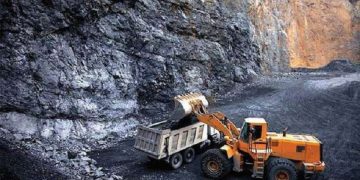While the global focus on environmental, social and governance (ESG) issues looks to phase out coal as an energy resource, the prospects for major coal producers like South Africa remain strong for coming decades.
Following the third Coal Industry Day, held online in July, SRK Consulting principal coal geologist Lesley Jeffrey said coal remains a key contributor to South Africa’s economy – both in terms of energy production and mineral export revenues.
Coal was only recently overtaken by platinum group metals as the country’s leading commodity by sales, but it remains the most significant component of the country’s mining in terms of value added – accounting for 25%[1].
“Strong international coal prices of around USD130 per tonne have raised the attractiveness of exports, with most of South Africa’s export coal going to Pakistan,” said Jeffrey. “China is also opening up opportunities for imports from SA following its trade wrangling with Australia, previously an important coal source for them.”
Although there has been less coal demand from India due to a surge in local production there, South African coal remains better suited to India’s production of sponge iron, she noted. This suggests that the recent dip in exports to that country may only be temporary; the added advantage is that this market takes relatively low-grade product from South Africa.
Coal Industry Day presenter Xavier Prévost confirmed that coal remained the largest single source of power generation globally. Prévost also said the coal sector expected a strong recovery in 2021 – a reminder of coal’s central role in fuelling some of the world’s largest economies.
Jeffrey highlighted that coal-fired power stations are still being built on a large scale in developing regions like south-east Asia – as this provides an affordable route to powering broader economic development. While South Africa has mined out much of its traditional export quality coal, there remained a long horizon of demand abroad for her lower grade coal.
“Unreliable rail services to the Richards Bay Coal Terminal continue to constrain SA’s coal exports, and this has been exacerbated by a recent hacking event and the spate of looting in parts of the country,” she said.
The export market was vital to sustain, she emphasised, as it created the economic balance that keeps coal producers profitable while they continue to supply Eskom at low margins. Without the higher-value exports, local electricity prices would likely have to rise even faster to meet the full cost of mining.
Looking further ahead, there was a level of consensus among Coal Industry Day speakers that South Africa could still expect another 20 to 30 years of reliance on coal.
“Between now and 2050, we have few options apart from coal for most of our energy generation,” she said. “Of course, there will have to be a change toward less carbon-intensive energy sources – and it is constructive that work has been initiated on charting a just transition towards renewables.”
The South African coal industry’s employment of about 90,000 workers[2] – nearly a fifth of mining’s head-count – means that as many as half a million people[3] in South Africa are directly reliant on coal mining. These are among those who will be affected as the country moves toward a lower-carbon future, said Jeffrey.
Eskom has recently completed comprehensive social impact studies for its Komati, Hendrina, Grootvlei and Camden power stations to assess the local impact of closure. Closing these plants could have devastating effects on direct and indirect employment in these areas.
“While power stations like Komati are relatively small, it is a good place to start,” she said. “It is vitally important that practical ways are found to transition away from coal while not leaving communities stranded.”
The challenge, she pointed out, was that the pace of South Africa’s transition was going to be slower than the climate change deadlines being pursued by developed countries. It was to be expected that developing countries will be looking for more time to make the necessary changes in line with global commitments.
[1] Source: Stats SA
“In South Africa, the PGM sector is the largest contributor to mining in terms of sales. In contrast, coal is the most significant component of mining in terms of value added, accounting for 25%. For the first time in the last decade, PGM sales overtook those of coal to become the most significant contributor to total mining-industry sales, reaching R190 billion in 2020. This was more than the value of iron ore and gold sales combined.”
[2] Source: SA coal producers’ website Coal Mining Matters:
[3] One miner supports about five dependants … Source: https://coaltech.co.za/wp-content/uploads/2019/10/Task-7.8.5-Socio-economically-Sustainable-Communities-Post-Mine-Closure-Phase-1-2006.pdf
























